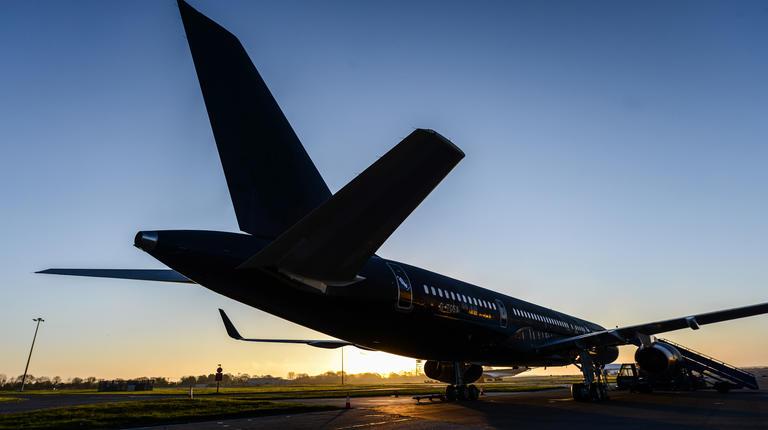Airplane air filtration has been a hot topic in the news in the last few months. People want to know whether they can breathe safely on an airplane. Although their initial perception may be that the air quality is poor in flight because one can’t roll down a window on an airplane, the opposite is actually true. In fact, the airplane air filtration system on the Boeing 757 cleans the air very efficiently. You can read below about how the air inside the plane is completely refreshed in a matter of minutes, making the airplane cabin air quite safe.
The planes are equipped with high-performance airplane HEPA filters, similar to ones used in hospital operating rooms. In case you were wondering, HEPA stands for “High Efficiency Particulate Arrestor” filter in the United Kingdom, and “High Efficiency Particulate Air” filter in the United States. A HEPA filter is a type of mechanical air filter. It works by forcing air through fine mesh that traps harmful particles that people do not want to breathe. These particles include things like pollen and dander, but also things like viruses and pathogens that are of greater concern. HEPA filters like the ones on the aircraft we use are incredibly efficient, removing over 99 percent of viruses and pathogens from the air.
Another important element of an airplane air filtration system is the refresh rate, which refers to how long it takes to replace existing air with new air inside a space. The refresh rate in the Boeing 757 is only two to three minutes. In other words, the air inside the cabin is replaced with new air in less than 180 seconds.
The way air replacement works is through what is called an airplane recirculation system. As the air is removed through the vents in the cabin floor or wall, it goes through the airplane recirculation system. In this system, fifty percent of the cabin air is recirculated. This recirculated air is mixed with 50 percent new air from outside.
Did you know that the air brought into the airplane from the outside is fresh and pathogen-free? This is because air at high altitudes, although very cold, is free from viruses and bacteria.
The mixture of recirculated and fresh air is then run through the airplane air filtration. The HEPA filters on the planes use a variety of filtration methods within the system to address particles of all sizes, whether something like a human hair at roughly 50 microns, a 10-micron dust particle or a .07-micron virus particle.
You might wonder why airplanes don’t just pull in entirely new air. There are a couple of reasons for this. The mixture of air produced by the airplane recirculation system has a higher level of humidity than air pulled in from outside the cabin at high altitude. This makes for a much more comfortable experience in the cabin, as very dry air can be irritating. Another reason for using a mixture of recirculated and fresh air is that it is more beneficial to the environment. This is due to the fact that mixing fresh with recirculated air uses less fuel than using 100 percent fresh air would.
There are two HEPA filters on the Boeing 757, one in each distribution system in the front and the rear of the cabin. The stated benefits of these HEPA filters for airplane air filtration include:
- They are true HEPA filters, meaning they have 99.9% microbial removal efficiency
- They have a high dirt-holding capacity
- They allow for minimum pressure loss within the aircraft
- They offer a very high collapse strength
- They have high adsorption capacity for odors
You can rest assured that these airplane HEPA filters are changed regularly to help ensure that you are breathing clean, fresh air. The filters also go through periodic testing to make sure that they meet their stated performance levels.
There are also two catalytic ozone converters on the customized Boeing 757 that condition the air brought in from the outside of the cabin and remove ozone from the aircraft cabin air. You can breathe easy knowing that the air surrounding you is conditioned, filtered and fresh.
Something that you might not know is that the air filtration system in airplanes is created so that the airflow in the cabin goes from the ceiling down toward the floor. This means that it is pulling air away from passengers’ faces. As a little tip, if you use the air vent located above your seat and turn it on low or medium, you can create a barrier around your face and send any particles suspended in the air to the ground faster. That air sent toward the floor is then pulled into the air recirculation system to be filtered or released from the aircraft.
Airplane Air Filtration System Frequently Asked Questions
Do all Boeing 757s have HEPA air filtration systems?
Yes. The Boeing 757 features HEPA filtration as part of its standard system.
What is the smallest particle size that can be removed by your HEPA filter?
As stated above, the HEPA air filters remove very small particles, such as bacteria and viruses. According to the manufacturer, even very small particles in the range of 0.1 to 0.3 microns are filtered out with an efficiency level of 99.99%.











